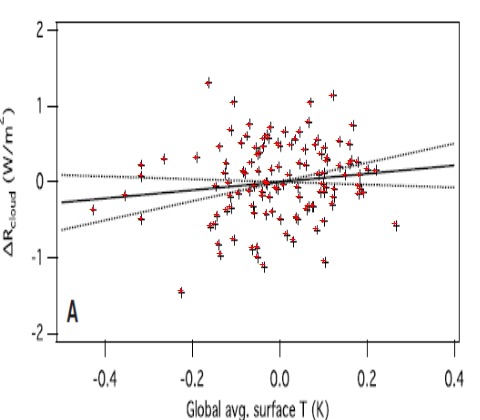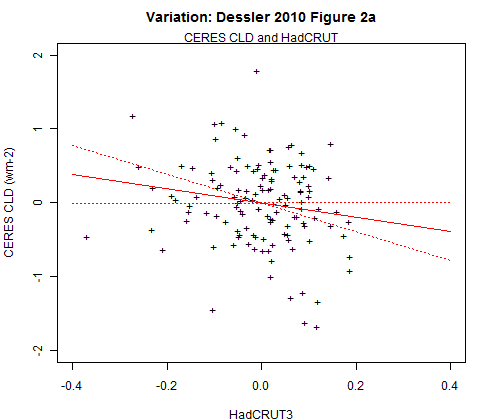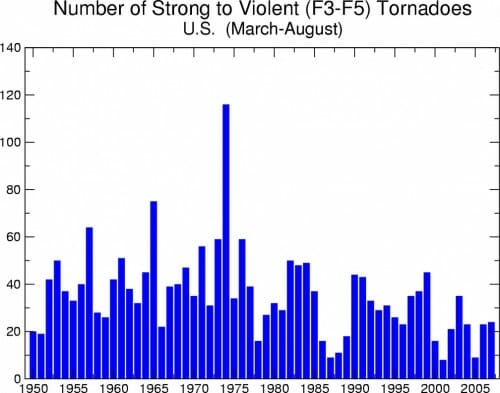Stupid Math Tricks
James Hansen, head of NASA's GISS and technical adviser on An Inconvenient Truth, wrote recently
Thus there is no need to equivocate about the summer heat waves in Texas in 2011 and Moscow in 2010, which exceeded 3σ – it is nearly certain that they would not have occurred in the absence of global warming. If global warming is not slowed from its current pace, by mid-century 3σ events will be the new norm and 5σ events will be common.
This statement alone should be enough for any thoughtful person who here-to-fore has bought in to global warming hysteria out of vague respect for "science" to question their beliefs.
First, he is basically arguing that a 3σ event proves (makes it "nearly certain") that some shift has occurred in the underlying process. In particular, he is arguing that one single sample's value is due to a mean shift in the system. I don't have a ton of experience in process control and quality, but my gut feel is that a 3σ event can be just that, a 3σ event. One should expect a 3σ event to occur, on average, once in every 300 samples of a system with a normal distribution of outcomes.
Second, and a much bigger problem, is that Hansen is gaming the sampling process. First, he is picking an isolated period. Let's say, to be generous, that this 3σ event stretched over 3 months and was unprecedented in the last century. But there are 400 3-month periods in the last hundred years. So he is saying in these two locations there was a 3σ temperature excursion once out of 400 samples. Uh, ok. Pretty much what one would expect.
Or, if you don't like the historic approach, lets focus on just this year. He treats Moscow and Texas like they are the only places being sampled, but in fact they are two of hundreds or even thousands of places on Earth. Since he does not focus on any of the others, we can assume these are the only two that have so-called 3σ temperature events this summer.
It's hard to know how large to define "Texas" (since the high temperatures did not cover the whole state) or "Moscow" (since clearly the high temperatures likely reached beyond the suburbs of just that city).
Let's say that the 3σ event occurred in a circular area 500km in diameter. That is an area of 196,250 sq km each. But the land surface area of the Earth (we will leave out the oceans for now since heat waves there don't tend to make the headlines) is about 150 million sq km. This means that each of these areas represent about 1/764th of the land surface area of the Earth. Or said another way, this summer there were 764 500km diameter land areas we could sample, and 2 had 3σ events. Again, exactly as expected.
In other words, Hansen's that something unusual is going on in the system is that he found two 3σ events that happened once every 300 or 400 samples. You feeling better about the science yet?
Luboš Motl has a more sophisticated discussion of the same statement, and gets into other issues with Hansen's statement.
Postscript: One other issue -- the mean shift in temperatures over the last 30 years has been, at most, about 0.5C (a small number compared to the Moscow temperature excursion from the norm). Applying that new mean and the historic standard deviation, my guess is that the Moscow event would have still been a 2.5σ event. So its not clear how an event that would have been unlikely even with global warming but slightly more unlikely without global warming tells us much of anything about changes in the underlying system, or how Hansen could possible assign blame for the even with near certainty to anthropogenic CO2.





